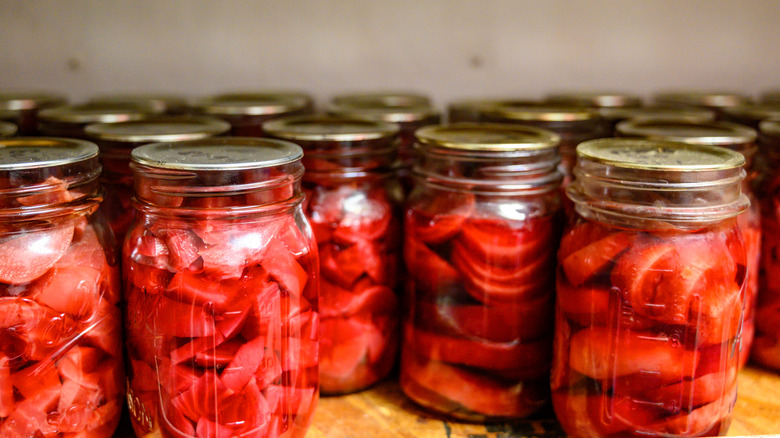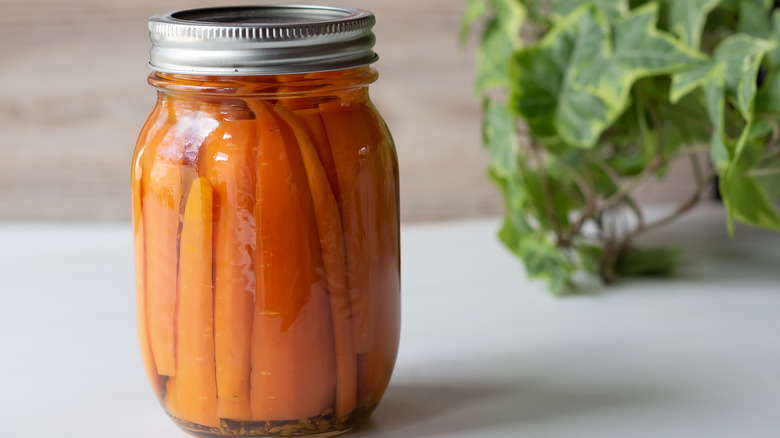Why It's Sometimes Dangerous To Can Low Acid Foods
Home canning is generally divided between two methods, which are determined by the type of food you're canning. In terms of food type, it refers to the pH level in food, and depending on the pH level, something is either a low acid or high acid food, as outlined by the FDA. Each type of food requires a different processing type, in order for the food to be canned safely.
The two ways to can food are either using the water bath or the pressure canning method. Water bath canning is processing the jars in water that reaches the boiling point and a temperature of 212 degrees Fahrenheit, or through pressure canning, which takes place at a higher temperature and is under pressure, as Preserve & Pickle details. High-acid foods such as fruits, tomatoes, and any items you pickle, should be processed by water bath canning (via Food in Jars). While low acid foods are all vegetables, all meat, fish, and poultry must be pressure canned, according to Ball Mason Jars.
Follow safety guidelines
Using a pressure canner for low-acid foods is the proper process, but you need to avoid one costly mistake when canning this way. Mainly it's important to understand that low-acid foods need to be heated at a higher temperature of at least 240 degrees Fahrenheit, to destroy a toxin that has the potential to make you sick or even kill you, as reported by the University of Minnesota Extension.
According to the National Center for Home Food Preservation, Clostridium botulinum is a bacteria in home canned food that can result in botulism, which can be a deadly form of food poisoning. Besides utilizing the proper method of canning low-acid foods, there are additional steps you can take in order to be safer. As noted by Mrs. Wages, it's also crucial to use a high-quality pressure canner, maintain its parts, and ensure the equipment is in proper order every time you begin a new canning session.

